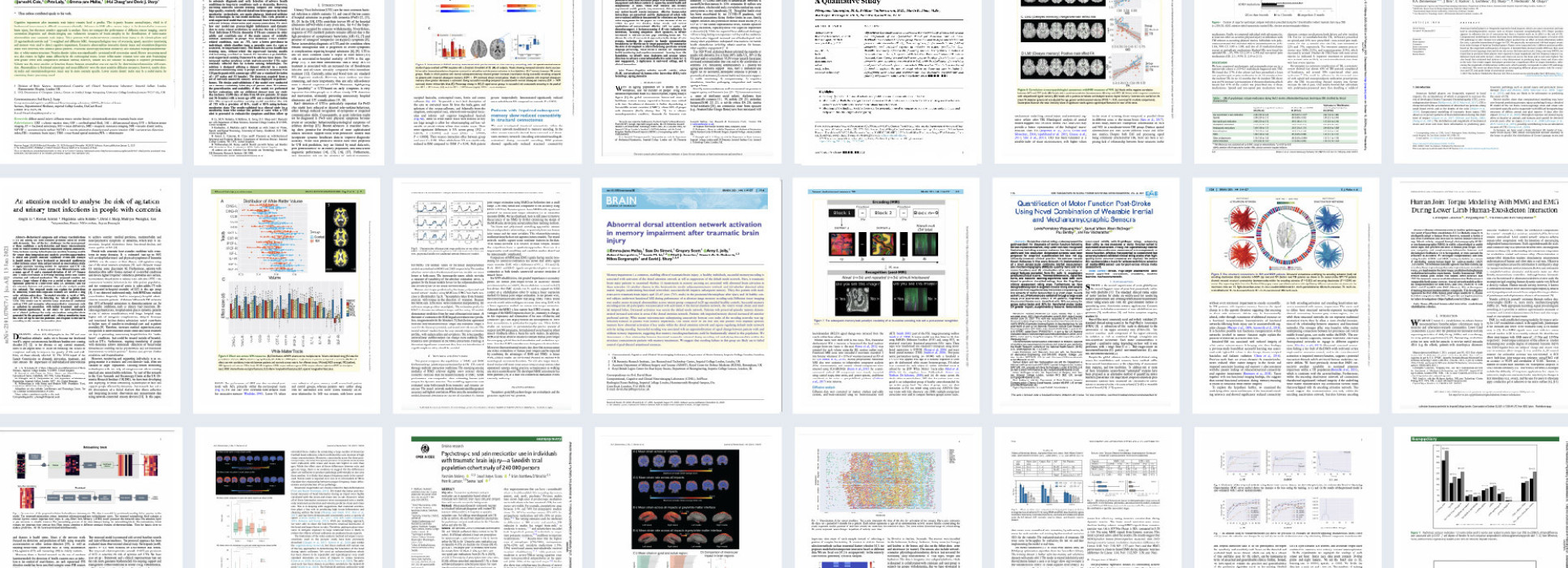BibTex format
@article{Graham:2024:10.1136/jnnp-2023-331854,
author = {Graham, N and Zimmerman, K and Heslegrave, A and Keshavan, A and Moro, F and Abed-Maillard, S and Bernini, A and Dunet, V and Garbero, E and Nattino, G and Chieregato, A and Fainardi, E and Baciu, C and Gradisek, P and Magnoni, S and Oddo, M and Bertolini, G and Schott, JM and Zetterberg, H and Sharp, D},
doi = {10.1136/jnnp-2023-331854},
journal = {Journal of Neurology, Neurosurgery and Psychiatry},
pages = {356--359},
title = {Alzheimer’s disease marker phospho-tau181 is not elevated in the first year after moderate-severe TBI},
url = {http://dx.doi.org/10.1136/jnnp-2023-331854},
volume = {95},
year = {2024}
}
RIS format (EndNote, RefMan)
TY - JOUR
AB - Background: Traumatic brain injury (TBI) is associated with the tauopathies Alzheimer’s disease and chronic traumatic encephalopathy. Advanced immunoassays show significant elevations in plasma total tau (t-tau) early post-TBI, but concentrations subsequently normalise rapidly. Tau phosphorylated at serine-181 (p-tau181) is a well-validated Alzheimer’s disease marker that could potentially seed progressive neurodegeneration. We tested whether post-traumatic p-tau181 concentrations are elevated and relate to progressive brain atrophy.Methods: Plasma p-tau181 and other post-traumatic biomarkers, including total-tau (t-tau), neurofilament light (NfL), ubiquitin carboxy-terminal hydrolase L1 (UCH-L1) and glial fibrillary acidic protein (GFAP), were assessed after moderate-to-severe TBI in the BIO-AX-TBI cohort (first sample mean 2.7 days, second sample within 10 days, then 6 weeks, 6 months and 12 months, n=42). Brain atrophy rates were assessed in aligned serial MRI (n=40). Concentrations were compared patients with and without Alzheimer’s disease, with healthy controls.Results: Plasma p-tau181 concentrations were significantly raised in patients with Alzheimer’s disease but not after TBI, where concentrations were non-elevated, and remained stable over one year. P-tau181 after TBI was not predictive of brain atrophy rates in either grey or white matter. In contrast, substantial trauma-associated elevations in t-tau, NfL, GFAP and UCH-L1 were seen, with concentrations of NfL and t-tau predictive of brain atrophy rates.Conclusions: Plasma p-tau181 is not significantly elevated during the first year after moderate-to-severe TBI and levels do not relate to neuroimaging measures of neurodegeneration.
AU - Graham,N
AU - Zimmerman,K
AU - Heslegrave,A
AU - Keshavan,A
AU - Moro,F
AU - Abed-Maillard,S
AU - Bernini,A
AU - Dunet,V
AU - Garbero,E
AU - Nattino,G
AU - Chieregato,A
AU - Fainardi,E
AU - Baciu,C
AU - Gradisek,P
AU - Magnoni,S
AU - Oddo,M
AU - Bertolini,G
AU - Schott,JM
AU - Zetterberg,H
AU - Sharp,D
DO - 10.1136/jnnp-2023-331854
EP - 359
PY - 2024///
SN - 0022-3050
SP - 356
TI - Alzheimer’s disease marker phospho-tau181 is not elevated in the first year after moderate-severe TBI
T2 - Journal of Neurology, Neurosurgery and Psychiatry
UR - http://dx.doi.org/10.1136/jnnp-2023-331854
UR - https://jnnp.bmj.com/content/95/4/356
VL - 95
ER -




